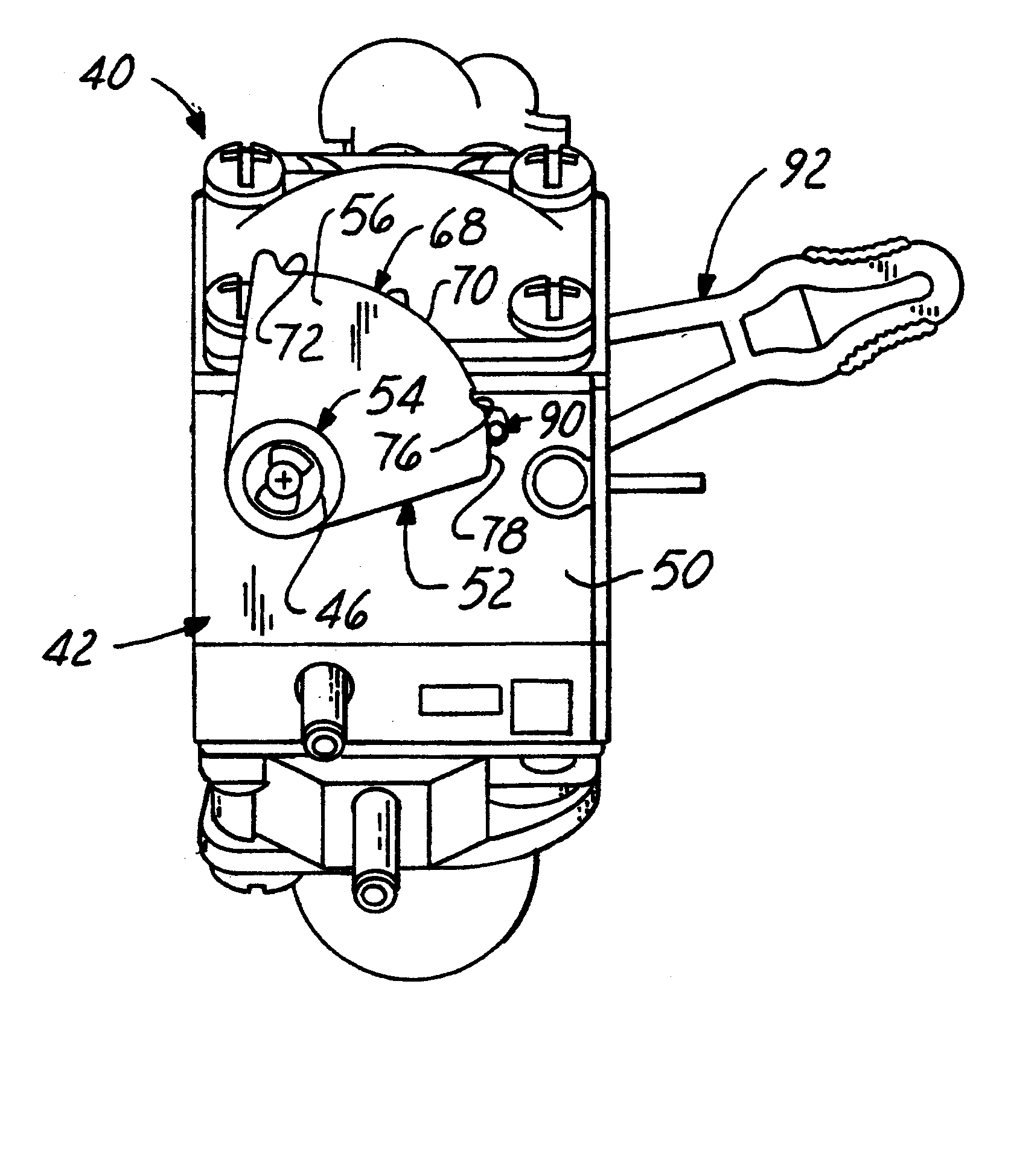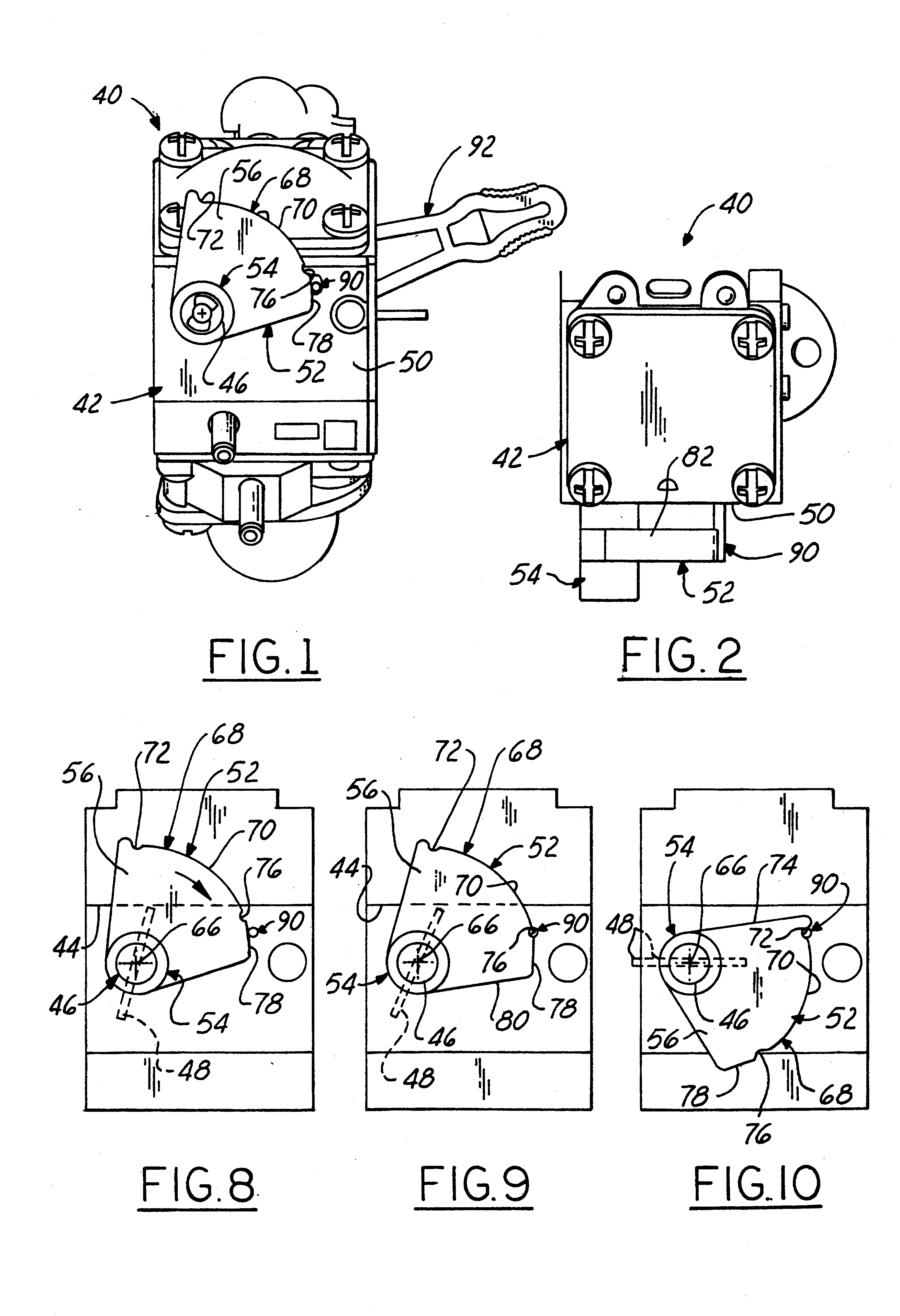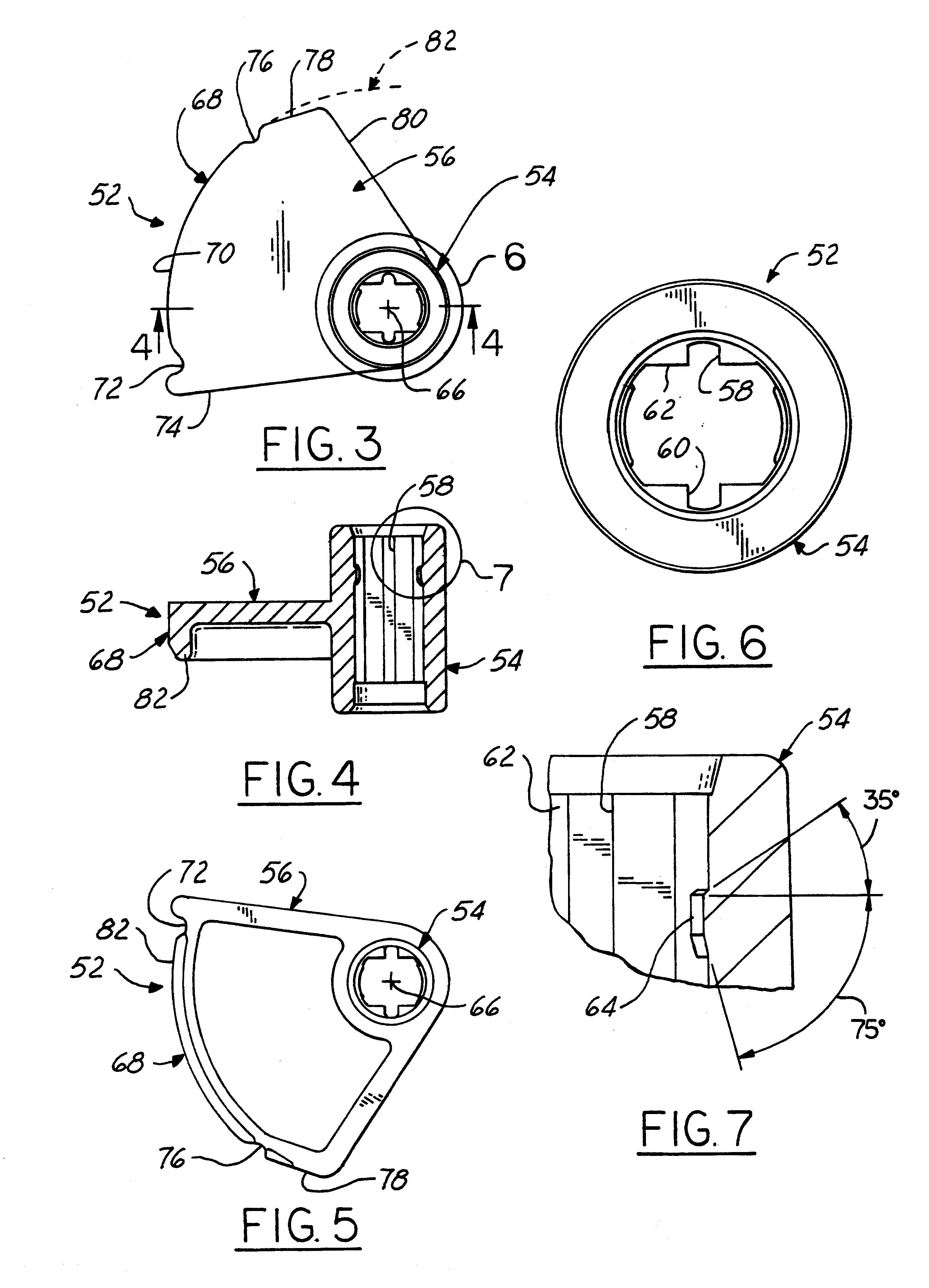Carburetor throttle control detent mechanism
a technology of detent mechanism and carburetor, which is applied in the direction of heating type, separation process, application, etc., can solve the problems of low displacement, difficult if not economically impossible angular positioning, and detent of machine, and achieve the effect of reducing manufacturing and assembly costs and small and precise increments
- Summary
- Abstract
- Description
- Claims
- Application Information
AI Technical Summary
Benefits of technology
Problems solved by technology
Method used
Image
Examples
first embodiment
of Carburetor Throttle Control Detent Mechanism
Referring in more detail to the accompanying drawings, FIGS. 1-10 illustrate a first embodiment carburetor throttle control detent mechanism of the invention as provided in conjunction with a conventional diaphragm type cubic carburetor 40 adapted for example, for use on a leaf blower appliance engine. Carburetor 40 has a generally cube-shaped body 42 that may typically measure only approximately one and a half inches (approximately 40 mm.) on each side. Body 42 has an air-fuel mixture through passageway 44 (FIGS. 8-10) and a cylindrical throttle valve shaft 46 journaled in body 42 for rotation about an axis 66 that extends across passageway 44 and carries a butterfly-type throttle valve blade 48 fixed thereon for rotation therewith. Due to the small size of carburetor 40, throttle shaft 46 necessarily has a given outside diameter of relatively small dimension, for example on the order of 3 / 16 inch (approximately 5 mm).
In accordance wit...
second embodiment
Carburetor Throttle Control Detent Mechanism
The second embodiment carburetor throttle control detent mechanism of the invention is illustrated in FIGS. 11-14 wherein elements alike in structure and / or function to those of the first embodiment are given a like reference numeral raised by a factor of 100. Carburetor 140 of the second embodiment is similar to carburetor 42 but is not of the "split" type. Rather the manually manipulated throttle lever 192 and the associated throttle lever detent arm 152 are both mounted on the same side of the carburetor, preferably using a mounting hub construction 154 similar to hub 54. Lever 192 and throttle lever detent arm 152 may be made as two separate components bonded together, or may be a one piece part made integral with one another by molding. ("Integral" as used herein means molded or cast as a one piece, unitary part). Throttle lever detent arm 152 differs from arm 52 only with respect to the formation of the detent for holding throttle va...
third embodiment
Carburetor Throttle Control Detent Mechanism
FIG. 15 illustrates a third embodiment of a throttle lever detent arm 252 of the invention. Detent arm 252 is identical to detent arm 52 except for having a large mass of material of the arm removed to leave a relatively wide arcuate slot 253 formed in blade 256 of the arm located radially between hub 254 and the peripheral edge cam control surface 268 of arm 252. Molding or machining arm 252 with slot 253 is advantageous in reducing the weight and material cost of the arm. Slot 253 also renders it possible to design-control radial deflection of the web portion 255 remaining between cam edge surface 268 and the arcuate radially outer edge 257 of slot 253. Slot 253 thus adds flexibility to the outer edge of arm 252 so that the same can provide spring stress for the detent mechanism, either alone or in combination with the spring stress provided by the material of pin 90. The contour of outer slot edge 257 thus may be varied to enhance the d...
PUM
| Property | Measurement | Unit |
|---|---|---|
| diameter | aaaaa | aaaaa |
| radius | aaaaa | aaaaa |
| diameter | aaaaa | aaaaa |
Abstract
Description
Claims
Application Information
 Login to View More
Login to View More - R&D
- Intellectual Property
- Life Sciences
- Materials
- Tech Scout
- Unparalleled Data Quality
- Higher Quality Content
- 60% Fewer Hallucinations
Browse by: Latest US Patents, China's latest patents, Technical Efficacy Thesaurus, Application Domain, Technology Topic, Popular Technical Reports.
© 2025 PatSnap. All rights reserved.Legal|Privacy policy|Modern Slavery Act Transparency Statement|Sitemap|About US| Contact US: help@patsnap.com



